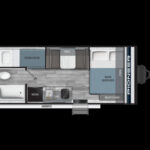Many audiophiles often get caught up in the numbers game, particularly when it comes to amplifier wattage. However, dismissing a lower-powered amplifier like the vintage Pioneer SX-770 based on its specifications alone would be a significant mistake. As any seasoned audio enthusiast knows, achieving impressive sound isn’t solely about brute force; it’s about synergy, speaker efficiency, and understanding your listening needs.
The notion that you need hundreds of watts to enjoy loud and clear music is often overstated. Unless you are driving extremely inefficient speakers, such as certain electrostatic models known for their power demands, or attempting to fill a stadium with sound, amplifiers like the Pioneer SX-770, often rated around 17 watts per channel, can deliver surprisingly robust performance. The key lies in speaker efficiency, technically referred to as SPL (Sound Pressure Level) measured in dB 1W/1M. This specification tells you how loud a speaker will play when driven by just one watt of power, measured at a distance of one meter.
Highly efficient speakers, often boasting SPL ratings of 90dB or higher, can produce considerable volume even with modest power inputs. Imagine speakers with a 90dB sensitivity – they will generate 90 decibels of sound pressure with just one watt. To put that into perspective, 90dB is akin to the sound level of a lawnmower, more than adequate for comfortable home listening. Driving such speakers with the Pioneer SX-770’s 17 watts can result in sound levels far louder than most people typically require for enjoyable listening sessions.
When considering upgrading your speakers to pair with a Pioneer SX-770 or similar amplifier, it’s crucial to move beyond specifications and engage in critical listening. Instead of solely relying on published data, connect your current speakers to the SX-770 and play music you are intimately familiar with. Pay close attention to the sonic nuances and overall sound quality. Your ears are the ultimate judge.
Furthermore, speaker design plays a significant role in how an amplifier’s power is utilized. Speakers with a reflex-ported enclosure, designed to enhance bass response, can be particularly forgiving with lower-powered amplifiers like the Pioneer SX-770. While this design can introduce a slight trade-off in bass accuracy for certain genres like classical music, where transient response is critical, it often excels with genres like rock and pop, providing a full and engaging sound even at lower volumes. Alternatively, acoustic suspension speaker designs, which prioritize accuracy over efficiency, might benefit more from higher-powered amplifiers.
Ultimately, the world of analog audio is nuanced and subjective. Your mileage may vary (YMMV), as the saying goes. Experimentation and personal preference are paramount. Before dismissing the capabilities of a vintage gem like the Pioneer SX-770 based on wattage figures alone, consider the efficiency of your speakers and trust your own ears to guide your audio journey. You might be surprised by the sonic prowess this classic amplifier can unlock.

